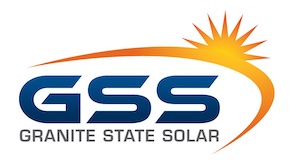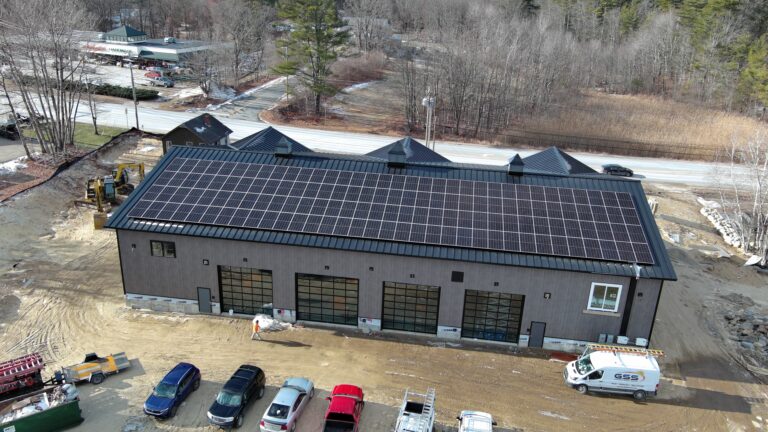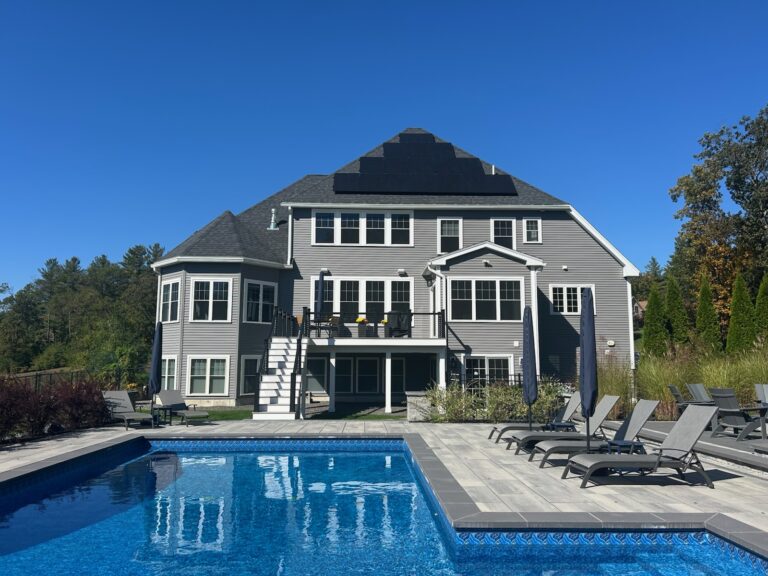At Granite State Solar we believe that solar is an effective energy option for many homeowners, but these systems are not one-size-fits-all. Some homes are better suited for roof mounted solar than others. If your roof isn’t optimal for solar, don’t worry, we offer alternative options such as ground mounted systems.
Curious if a roof mounted system would be a good fit for your home? Below we dive into the four main factors that determine if a roof is a fit for solar, which are the material, solar access, orientation and age.

Roof Material
Solar panels can be installed on a variety of roof types including standing seam, asphalt shingle, and corrugated metal. Standing seam roofs are preferred industrywide. This is simply because no roof penetrations are required to mount the solar system. Standing seam roofs are made of wide, metal panels that lock together and are mounted to the roof by hidden clips. Corrugated metal and asphalt shingle are also great for roof mounted solar. However, they do require roof penetration.
On the other hand, membrane roofs are not suitable for solar because they are too brittle to support the weight of the panels. Membranes are used for flat roofs and are made of thin, flexible or semi-flexible materials. We also advise against putting solar panels on wood or slate roofs for lack of stability.
Solar Access
It’s no secret that solar panels need to be exposed to sunlight to create energy. If a roof is shaded by trees or other obstructions, the light will not be able to hit the panels and therefore they will produce little to no energy. Sometimes the removal of trees is necessary to get better solar access, or a ground mount is recommended if it will have more direct contact with sunlight than the roof.
Orientation
In New Hampshire, as we are in the northern hemisphere, the ideal orientation for panels is facing true south. Homes in NH that do not face true south will get about 20% less energy from their panels than those that do. Because of the route the sun travels across the sky, panels that are positioned facing south will have the greatest exposure to sunlight throughout the day. This is not to say that if your roof in NH faces a direction other than south you are out of luck. Many of Granite State Solar’s customers have roofs that face north, east or west and are still able to produce solar energy but at a lower rate throughout the year.
To get the most out of a solar system, the panels need to be placed at an optimal angle to interact with the sun. Often, panels will be installed at angles that are close or equal to the latitude of a home. The ideal angle for panels to be titled is 35 degrees because it will allow a solar system to produce energy even as the position of the sun fluctuates throughout the year.
Age
The age a roof might impact how safe it is to install solar on it. We recommend replacing shingle and asphalt roofs prior to installing solar panels if they are 15 years or older. However, it is not necessary for all roofs of this age to be replaced if they are still in good condition and the homeowner does not wish to do so. Corrugated roofs can last a lifetime unless they need to be replaced because of an issue.
Conclusion
These are the main considerations when starting to think about going solar. At Granite State Solar, we always begin the solar process with an in-person site-visit so we can assess a roof’s orientation, solar access, material and age before giving any recommendations to homeowners. We want to ensure each of our customers gets the best solar system for their individual needs.
To learn more about which solar options are right for your home, set up a free site-visit with one of our Solar Advisors!



